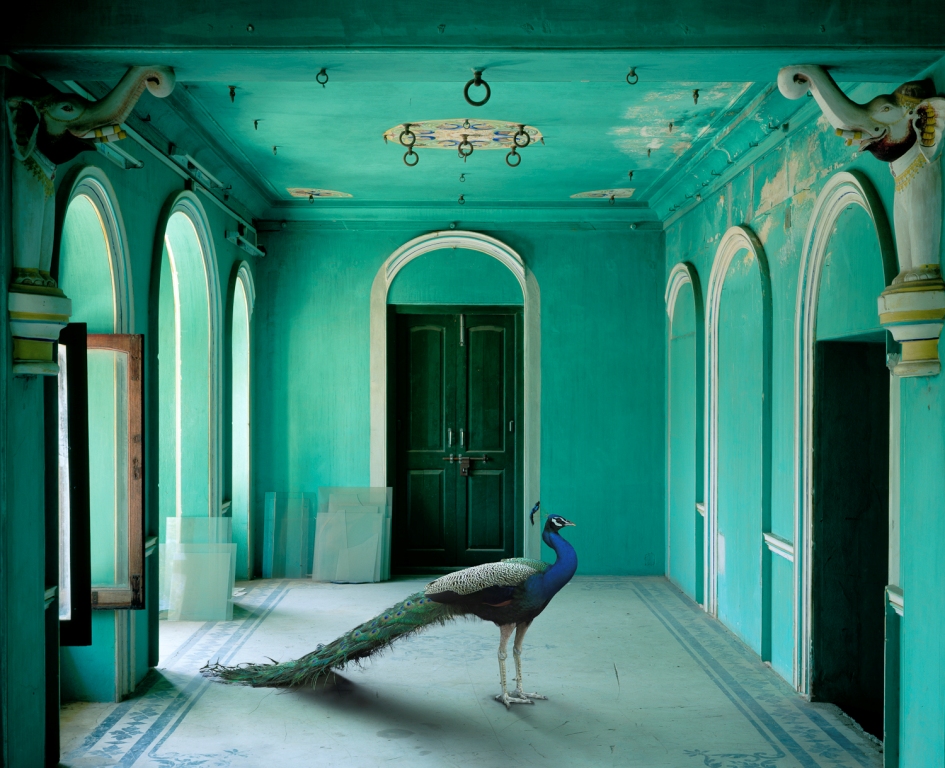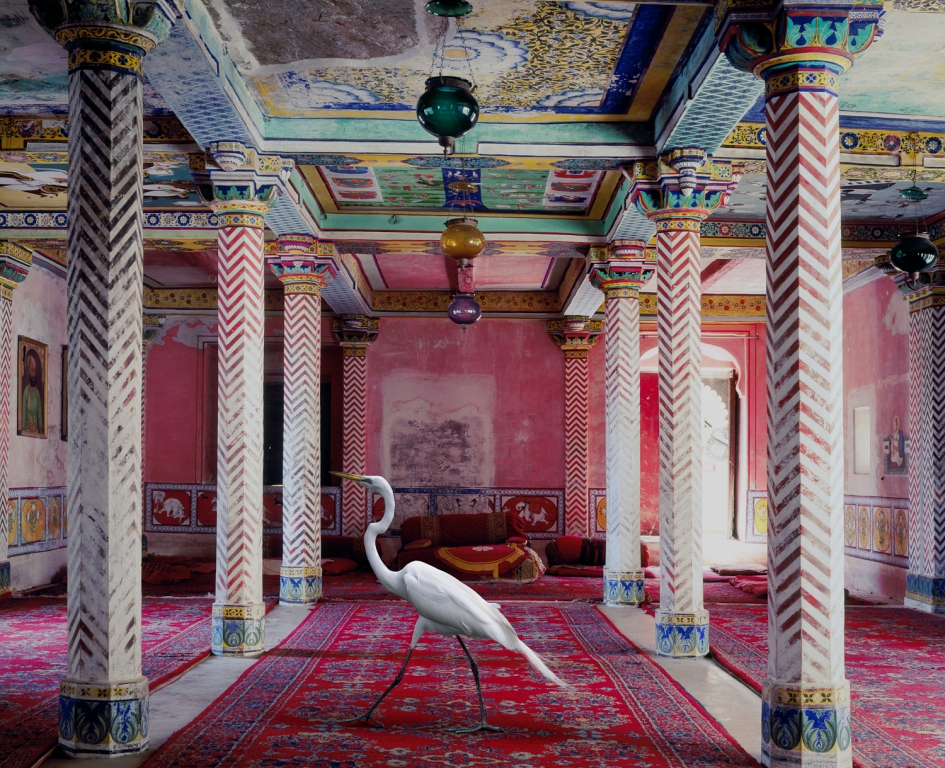Blogs
The Fantastical World of Karen Knorr’s ‘India Song’ Series
Krittika Kumari
A closer look at photographs from Karen Knorr’s acclaimed India Song series that occupy a significant place in MAP’s vast contemporary photography collection.
Brightly lit palatial interiors, capturing the ornate carvings, inlays, wall paintings and other such elements of Mughal and Rajput architecture and cultural heritage, and in the middle of it all are placed wild animals and birds – such is the pictorial language of Karen Knorr’s photographs from her acclaimed series, India Song. Photographs from this series make up an important part of MAP’s vast contemporary photography collection. In addition, Knorr has donated her limited edition artworks from the same series to MAP, to help raise funds for the Museum’s activities. These works will now be available with MAP for sale to those who wish to acquire these works at a very reasonable price.

Conqueror of the World, Podar Haveli, Nawalgarh by Karen Knorr, 2010, Archival pigment print, Image copyright: Karen Knorr
Knorr began the series during what she describes as a “life-changing trip” to India, when she travelled across Rajasthan photographing the interiors of several forts, havelis and mausoleums in sites and cities such as Nawalgarh, Deogarh, Jodhpur, Udaipur, Jaipur and more, using a large format Sinar P3 analogue camera. Later, by fusing high resolution digital with analogue photography, she inserted images of animals, photographed in sanctuaries, zoos and cities, within these architectural sites. Thus came about this fantastic, surreal imagery of animals integrated with India’s rich cultural heritage, making one question their presence and also the rigid hierarchies that were prevalent within these spaces.

Guarding Honour, Kota City Palace, Kota by Karen Knorr, 2020, Archival pigment print, Image copyright: Karen Knorr
Born in Frankfurt am Main, Germany in 1954 and raised in San Juan, Puerto Rico in the 1960, Knorr has lived in England since the 1970s and is currently Professor of Photography at the University for the Creative Arts in Farnham, Surrey. In addition to her photographic practice, Knorr has also lectured internationally at institutions including Goldsmiths College, Harvard University and The Art Institute of Chicago. She first studied art in Paris and London, and then went on to study photography and film at the University of Westminster in the mid 1970s. During her early career, she focused her pictorial world on the often patriarchal conventions and lifestyle of the British class system and other such cultural traditions in Europe. Her work, therefore, has always drawn upon the politics of representation and gender in a playful yet thought-provoking manner.

The Queen’s Room, Zanana, Udaipur City Palace by Karen Knorr, 2010, Archival pigment print, Image copyright: Karen Knorr
In series such as India Song, she continues to explore such questions of feminine subjectivity along with animality, and issues of power, discrimination and social heirarchy. For instance, the photograph titled The Queen’s Room, Udaipur City Palace depicts a peacock, a male bird, within the zenana or female quarters of a palace. In medieval Indian palaces, there were separate quarters for men and women of the household, and the women could only look over the male, or mardana quarters, through screens. The women could sit and look over the meetings held in the durbars from behind this screen which in a way became their protected, domestic space from where they could even comment upon the happenings of the meetings, or share their opinions about the discussions amongst themselves. This fascinated Knorr deeply and thus, in her work, she attempted to highlight these gender disparities by placing a male bird within the zenana of a palace, or by depicting a female exotic bird in a zenana in Flight to Freedom, looking out longingly, almost as if ready to flee from the constraints of traditional stereotypes.

Flight to Freedom, Durbar Hall, Dungarpur by Karen Knorr, 2010, Archival pigment print, Image copyright: Karen Knorr
Similar to her India Song series (2008-2020), Knorr’s Monogatari series (2012-2017) looks at animals placed within Japanese interiors, referencing the perpetual conflict between nature and culture. Both series will be presented at Karen Knorr’s upcoming solo exhibition Transmigrations, her first in the UK since her exhibition Belgravia and Gentlemen at Tate Britain in 2014. Transmigrations, presented by Augusta Edwards Fine Art, will be held at the Cromwell Place, London from 20 October to 31 October, 2021 and will feature a selection of her recent and past work including her large-scale colour works using compositing and digital montage from her different series such as India Song, Metamorphoses, and Fables.
Krittika Kumari is the Digital Editor at the Museum of Art & Photography, Bengaluru. A graduate of the Courtauld Institute of Art in London, her research interest lies in the Mughal miniature painting tradition, as well as Indian Modern Art.








